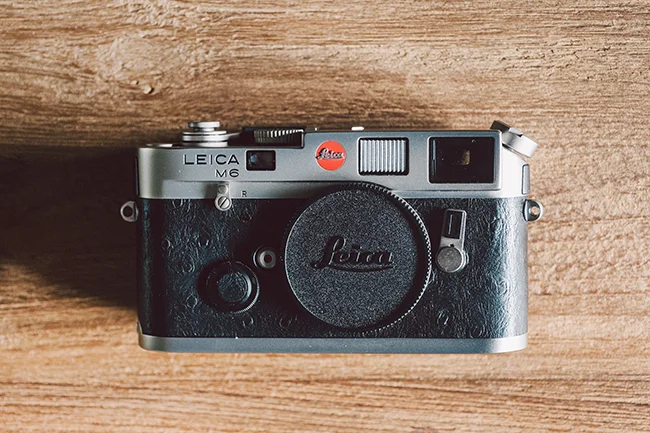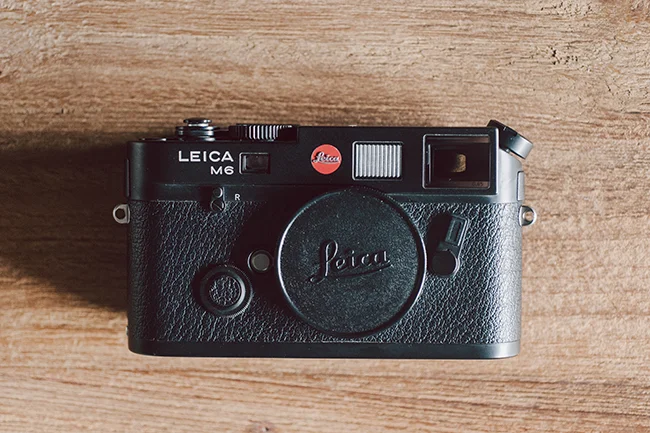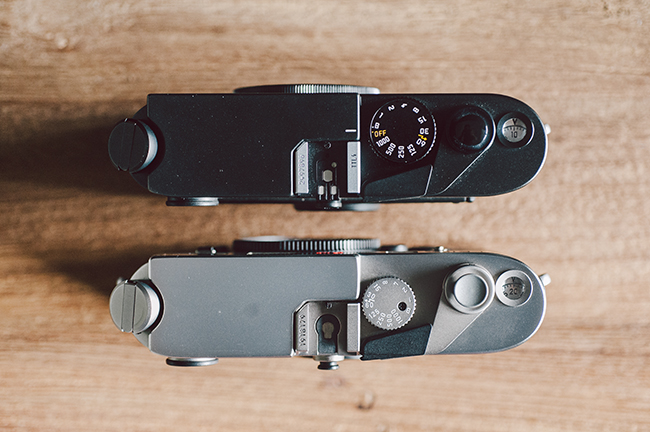I was lucky enough to own both Leica M6 classic (Titanium) as well as the M6 TTL (black chrome) during years of my collection. Both are equally well built, film camera with simplistic design which still functions flawlessly even after so many years.
Leica M6 started it's production life from 1984 to 2002 hence there have been quite a few variations and improvements / changes being implemented along it's production life. You will hear models such as the M6 Classic , TTL, Panda, LHSA , Titanium and etc being used to describe these cameras but in general the CLASSIC and TTL is the only difference while the rest are merely cosmetic which sets them apart.
The M6 Classic is the early production units for this model. The design ques was brought over from the older Leica M4 with an additional center weighted light meter while the self timer function was removed. The shutter speed dial, film release lever and etc are all identical. The M6 classic titanium is the polished 'up market' version of the classic M6. It has a titanium 'coated' top and bottom plate and comes with ostrich leather. I stated 'coated' as it wasn't cast out from a block of titanium but merely a coating , but an extremely hard one. The regular M6 classic come with either matte black or chrome finish. Two LR44s batteries fuels the light meter in which could last you easily 10 to 13rolls per change. The battery compartment is located right next to the lens release button which is an ease to use. All M6 comes with three different types of rangefinder magnification which is the 0.72x ( standard ) , 0.85x ( telephoto ) and 0.58x ( wide angle lenses )
The M6 TLL on the other hand is the so called improved / updated version of the camera as it was introduced later. The term TTL refers to FLASH TTL and not to be mistaken as metering TTL as both camera has the same metering system. I opted for the 0.85x viewfinder version so it's a tad easier to focus with this camera. The 0.85 is ideal for using with telephoto or wide aperture lenses which stops down to f1.4 or lower. This camera comes with paired frames lines( 35 / 50 / 75 / 90 / 135mm ) hence the viewfinder seems a bit more cluttered as compared to the M2 but in return you gain some flexibility of using wider choices of lenses without the need of having additional hot shoe viewfinder which could be rather costly and hard to find specially in KL. The M6 TTL has a larger shutter speed knob which makes adjustments a lot easier, an added OFF function on the speed dial as well to conserve battery and the light meter is -1 EV more sensitive. The TTL light-meter display has three red LEDs <under, correct, over > while the older M6 only had a left arrow 'under' and right arrow 'over', which made it more difficult to judge how far you were from correct exposure. The frame counter is a tad wider as well than the Classic model. On the down side, the camera is slightly bulkier being 2 to 3 mm taller to make space for the additional electronics on the top plate. The battery life on the TTL isn't as good either. I could only clock 5 to 6 rolls on the average for a fresh set of LR44s and one has to remember to always OFF the camera when not in use or else the battery will be fully drained the next day. I find this really cumbersome at times. The Classic doesn't seems to have this issue at all which gives it a plus point and hence I travel with it most of the time. I brought my M6 Classic Titanium along side with my digital M240 to the Everest Base Camp in Tibet and it worked flawlessly at such harsh condition. Even at -8 deg Celsius with gushing strong wind it operates flawlessly throughout the expedition. It even accidentally survived a drop when it slips from my hand, thanks to the altitude sickness which hits me halfway when I am on my way to the base camp. I am truly glad the camera survived the fall without a scratch thanks to the protective leather casing I was using. You may view the images of taken with the M6 on "Essence of the Himalayas" here.
Using the rangefinder cameras such as these Leica M’s require sometime of getting used to . First of all, it’s a fully manual camera. Focus and exposure setting are all manually operated. To focus with these rangefinders, one would just have to turn the focusing tab on the lens to match the superimpose subject in a small rectangular box right in the center of the viewfinder. It maybe cumbersome at first but once you get the hang of it it's fairly easy. Being a rangefinder, the cloth shutter curtain is really silent ( as compared to SLR ) as it does not have a flapping mirror. Almost identical to our modern day mirrorless camera such as the Olympus Pen and Fuji X100. Also the size of the camera body and lenses is a lot smaller hence carrying the camera all day long would no be much of a problem. Smaller also means less obtrusive and intimidating especially when pointing your camera at a total stranger. Last but not least it's the flexibility of using zone focusing which makes shooting candid so much easier. Basically the photographer will shoot based on the predicted 'in-focus' zone without having the need to focus the lens. This is the reason why most street photographers love using rangefinder camera as compared to SLR. All in all both the M6s are amazing cameras even though I heart the M6 Classic more and I would label them as a true workhorse of the Leica Ms. For the price of a Fuji XT-1, I would take this camera in a heartbeat and you could still inherit them to your grandson when time comes : )
If you would like to know more about other Leica M models in the past article ...click here !






